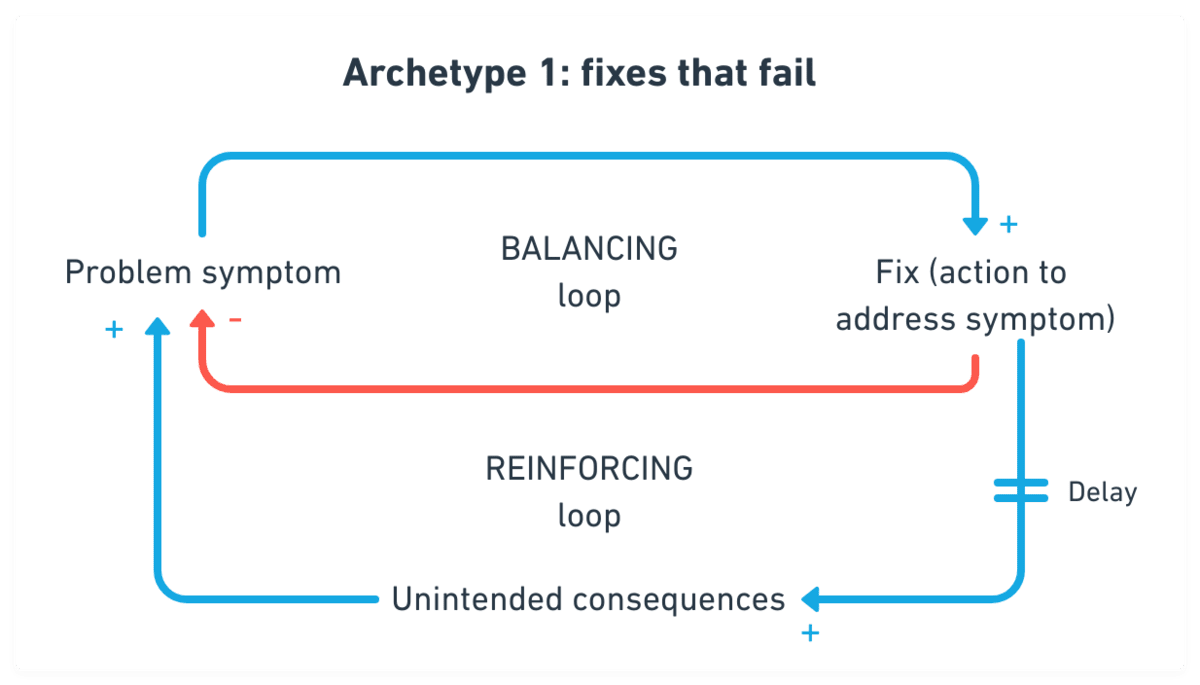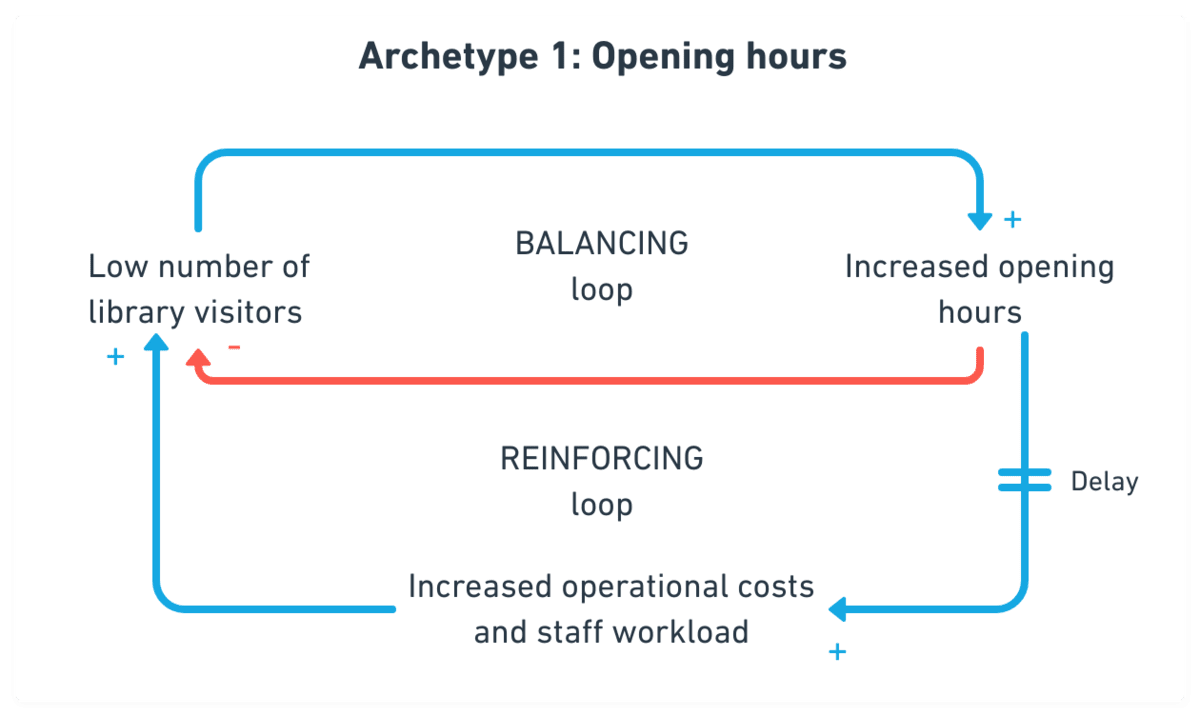TB871: Archetype 1 — Fixes that fail
Note: this is a post reflecting on one of the modules of my MSc in Systems Thinking in Practice. You can see all of the related posts in this category.
Activity 2.22 asks us to apply one of five system archetypes to our situation of concern. The first is ‘fixes that fail’:
In this archetype, the initial benefits of action to address a problem are found to be temporary. What seemed initially to be the solution stops working. It turns out the temporary fix has failed. For example, when you hear a statement like ‘I get stomach pains almost every day but I find the indigestion remedy from the supermarket deals with the immediate problem but actually may cause other ailments later on’. The point here is you don’t need any medical understanding at all to see that a fix like an indigestion remedy does nothing to forestall any unintended consequences that are completely unseen at this stage.
(The Open University, 2020)
I’ve recreated the diagram from the module materials:

So if we take increased opening hours as an attempt to increase visitor numbers we get an impact on the budget and staff workload, which can potentially lead (after a delay) to a decline in service quality and, after an initial spike, a reduction in numbers of visitors:

Equally, I could apply this archetype to:
- Expanding digital access: the problem is low engagement with library services, so the fix is to expand digital access and promote ebooks. After a temporary benefit of increased engagement, after a delay, reduced demand for physical resources leads to budget cuts, with traditional library users feeling alienated.
- Increased marketing efforts: the problem (low number of library visitors) is addressed with the fix of spending more time and budget on marketing. This attracts more visitors initially, but after a delay the budget is strained, reducing funds available for other services.
- More community activities: the problem of low community engagement leads to the ‘fix’ of increasing the number and variety of community activities. This increases visitor numbers, but also increases the noise, making is less suitable for quiet study. These users stop using the library.
References
- The Open University (2020) ‘2.3 SD in practice’, TB871 Block 2 Tools Stream [Online]. Available at https://learn2.open.ac.uk/mod/oucontent/view.php?id=2261481§ion=4.4.1 (Accessed 29 May 2024).
